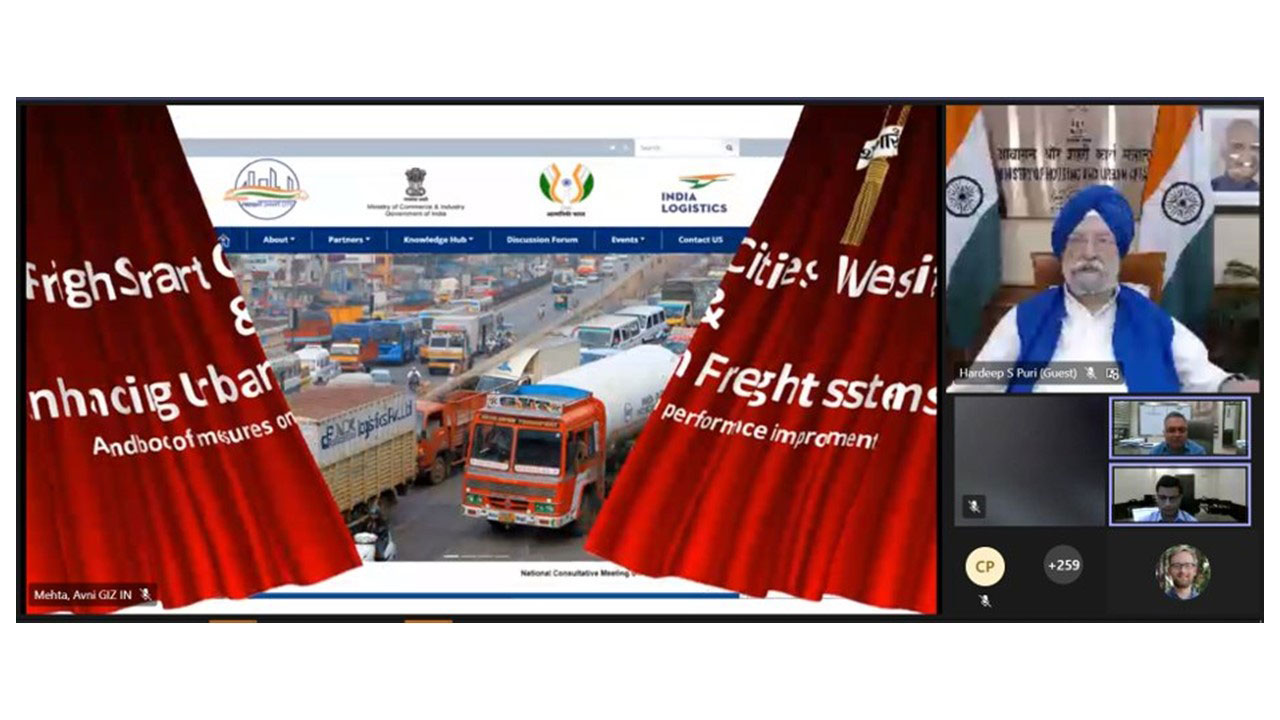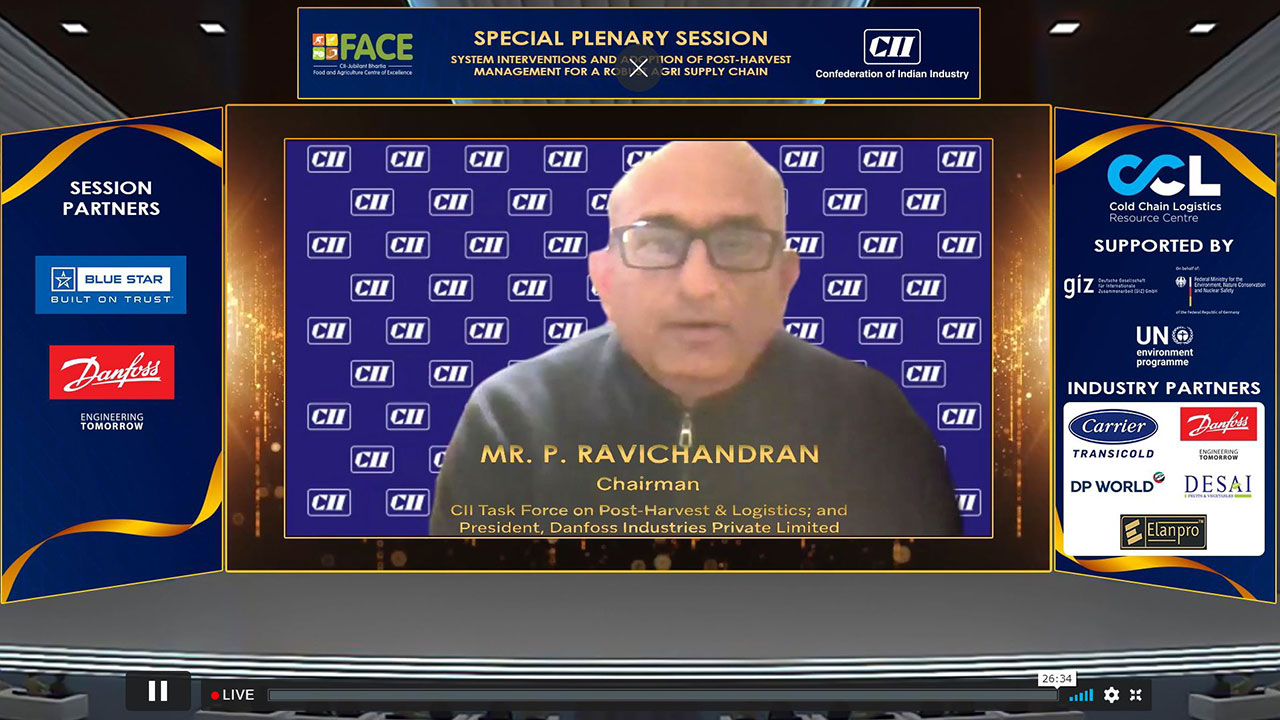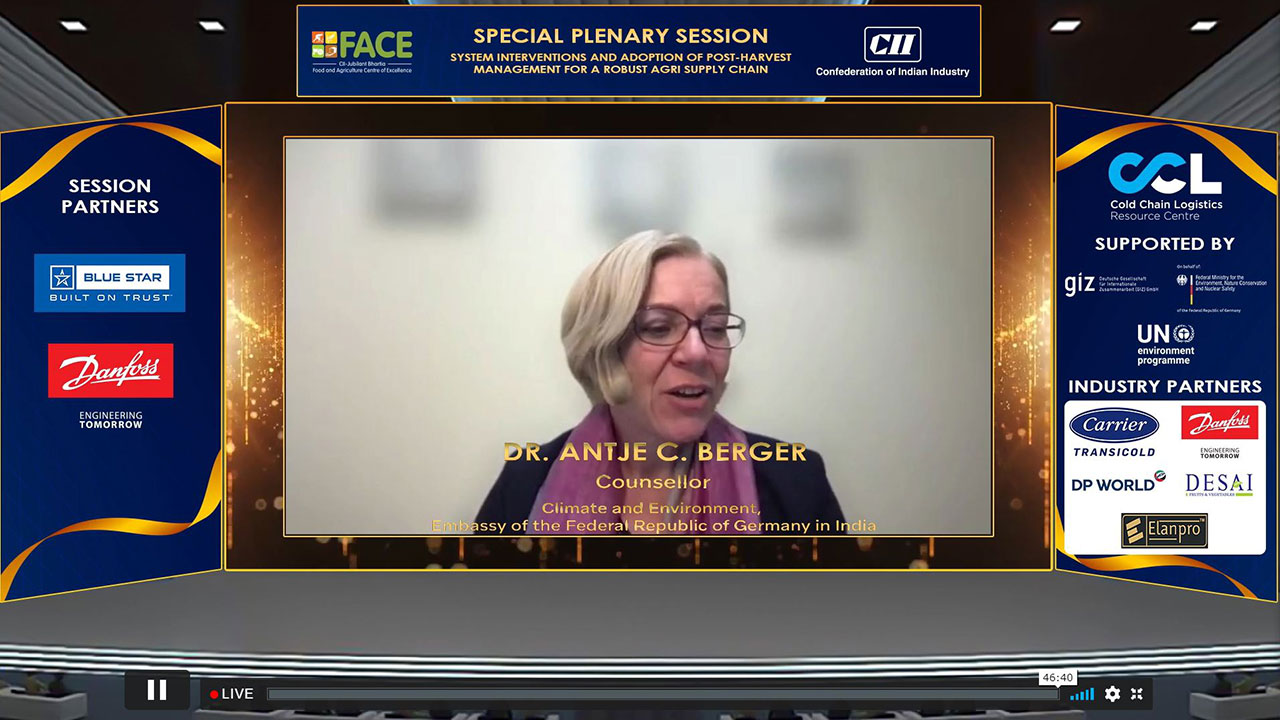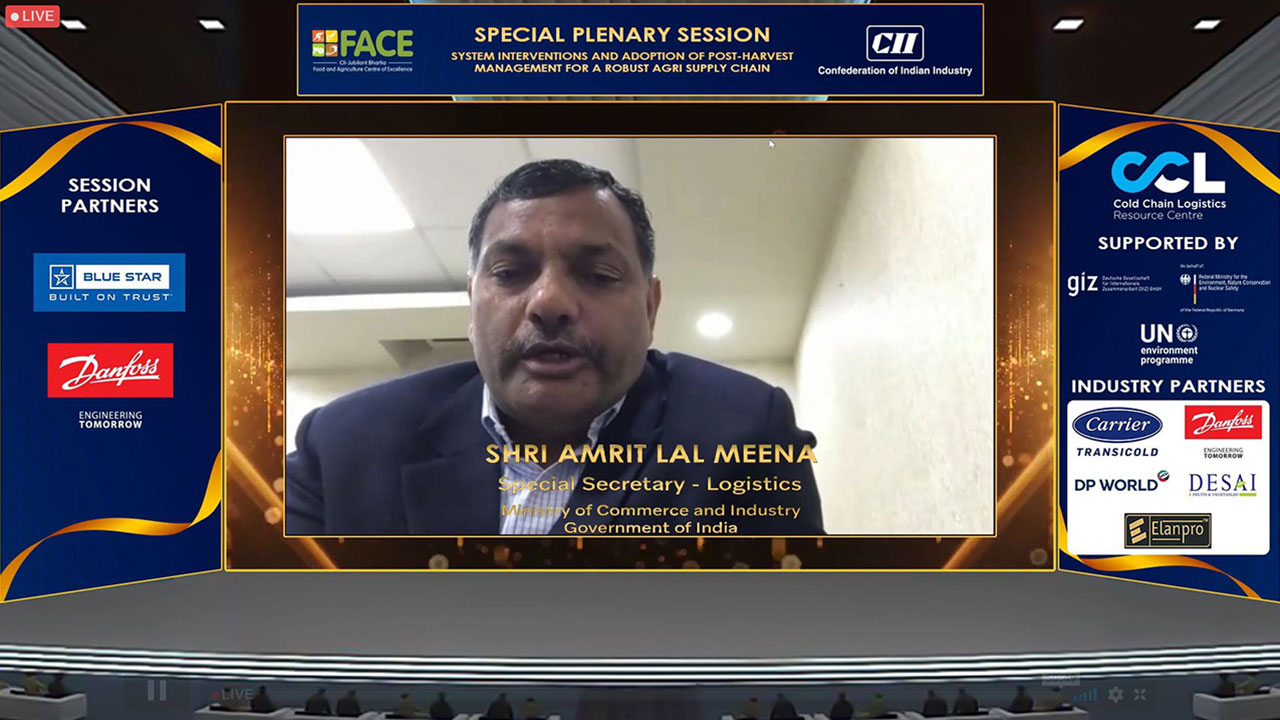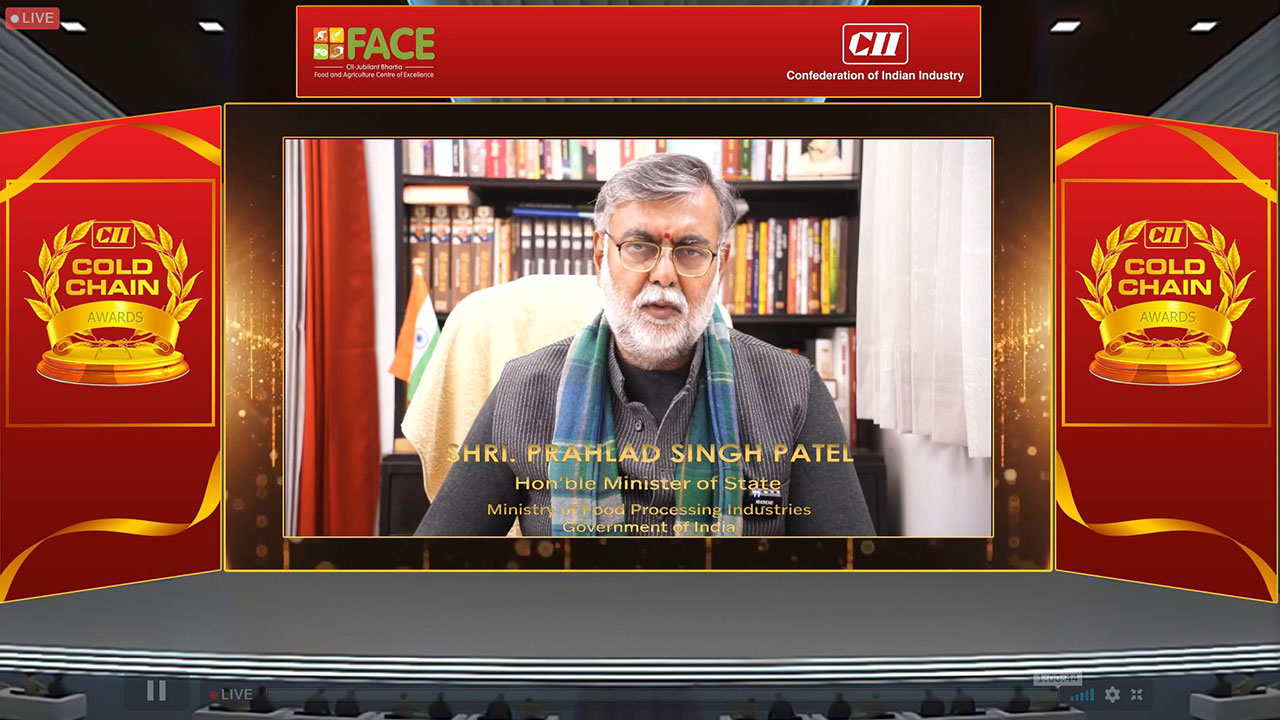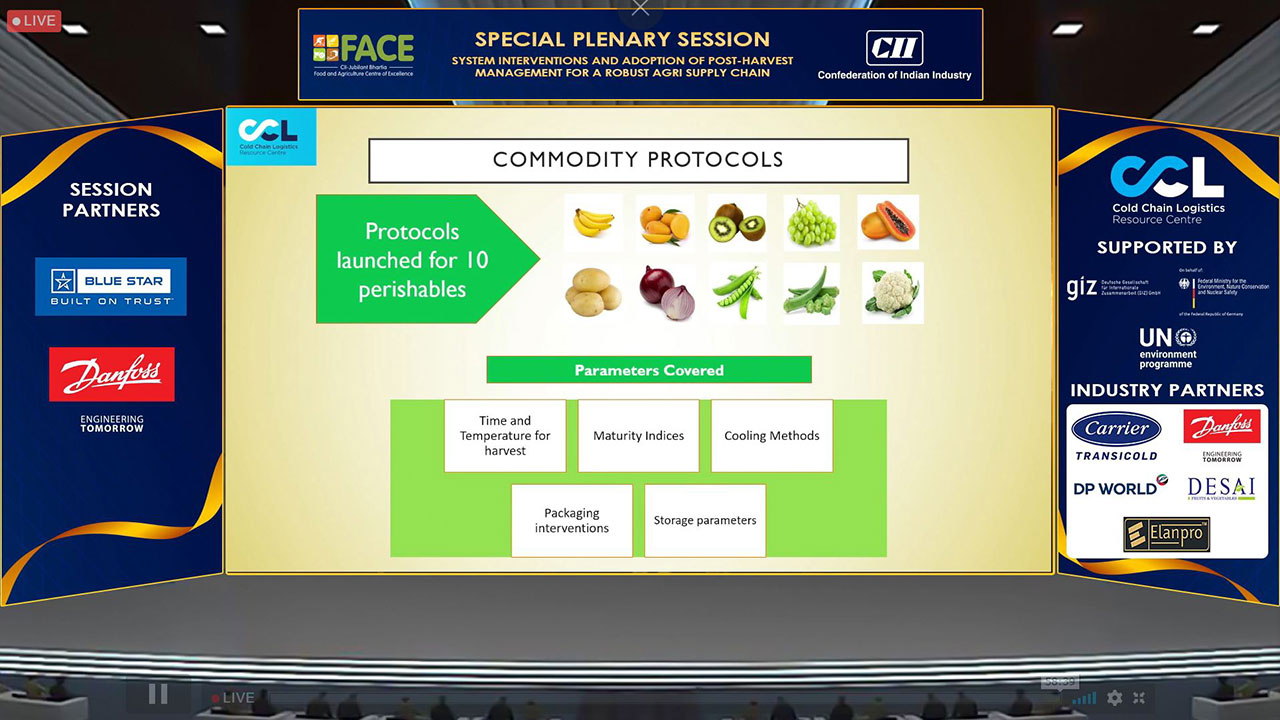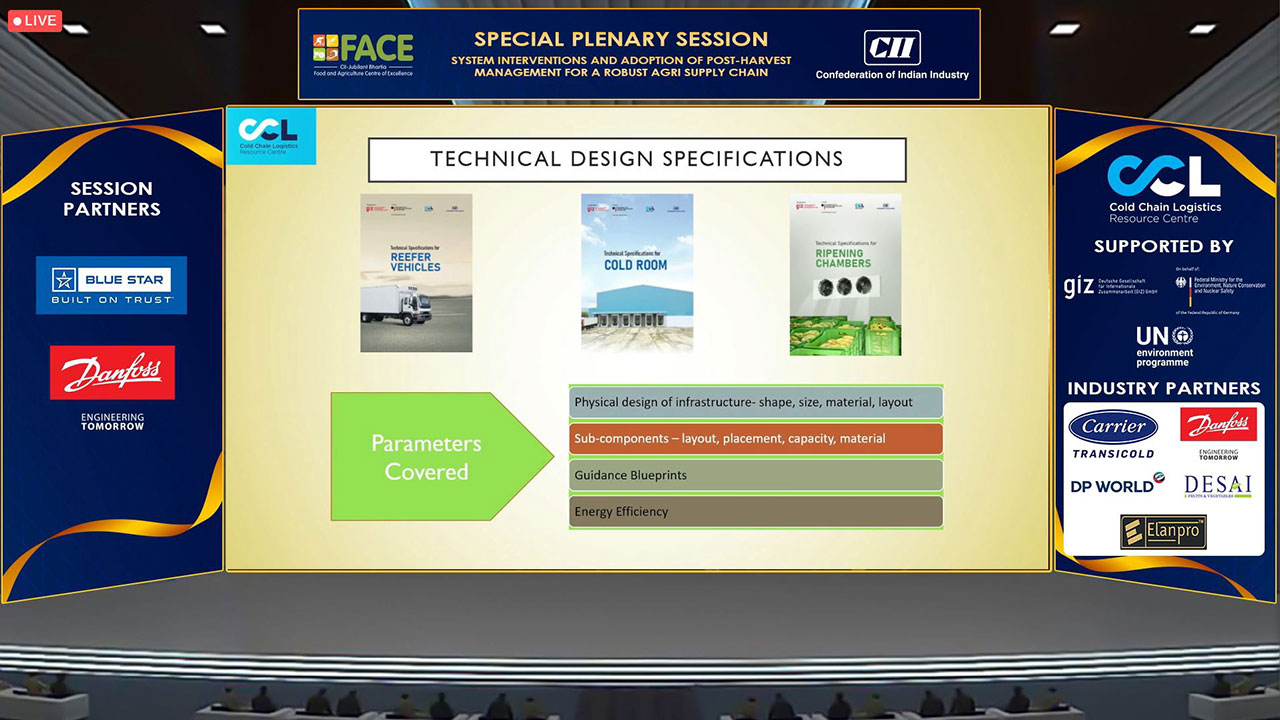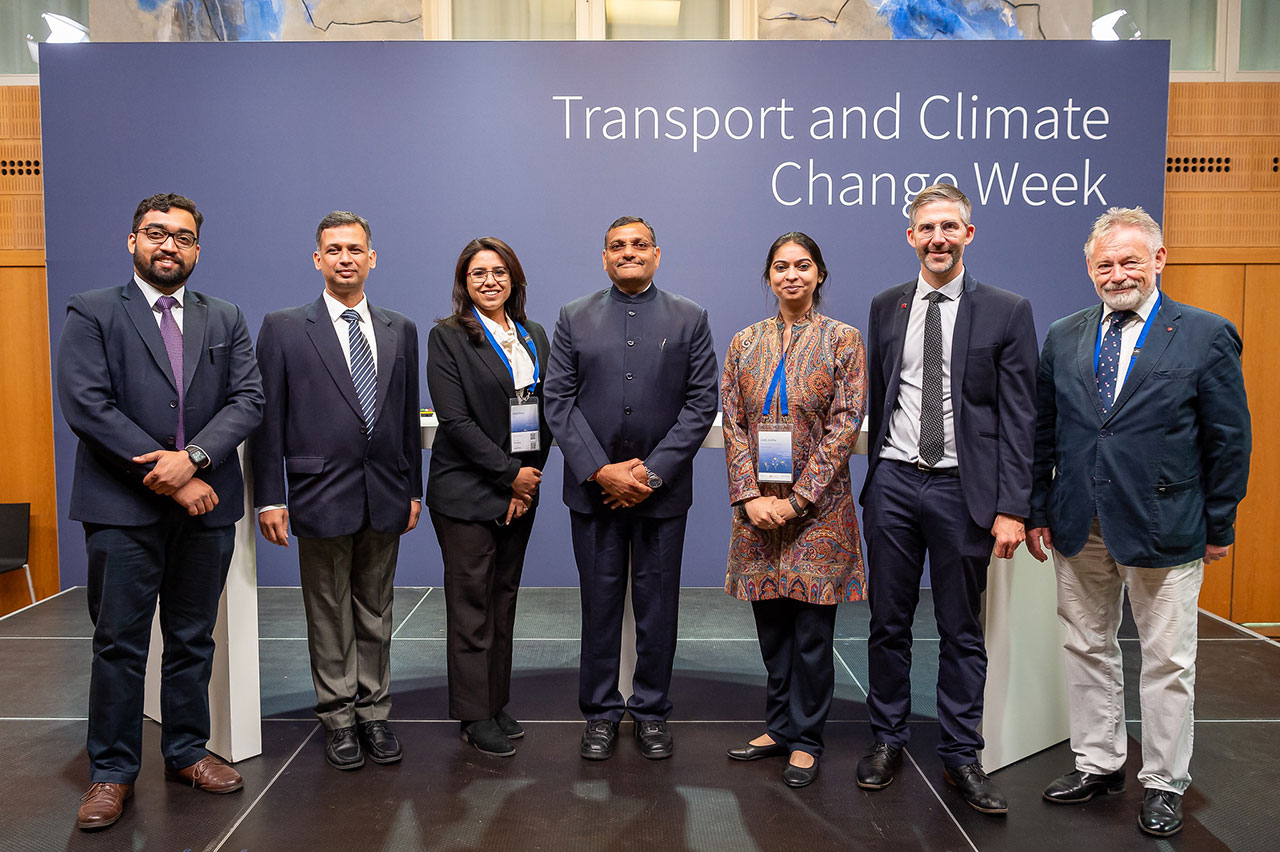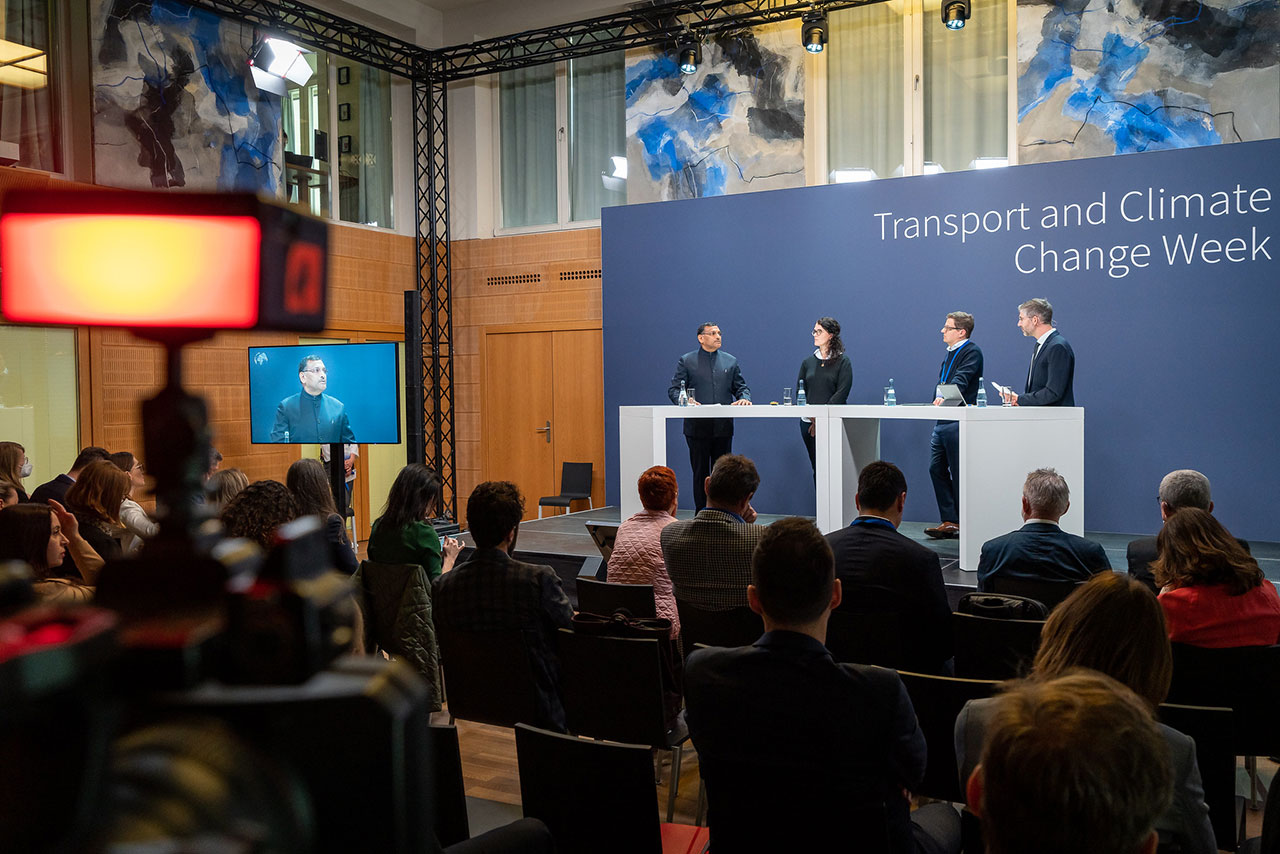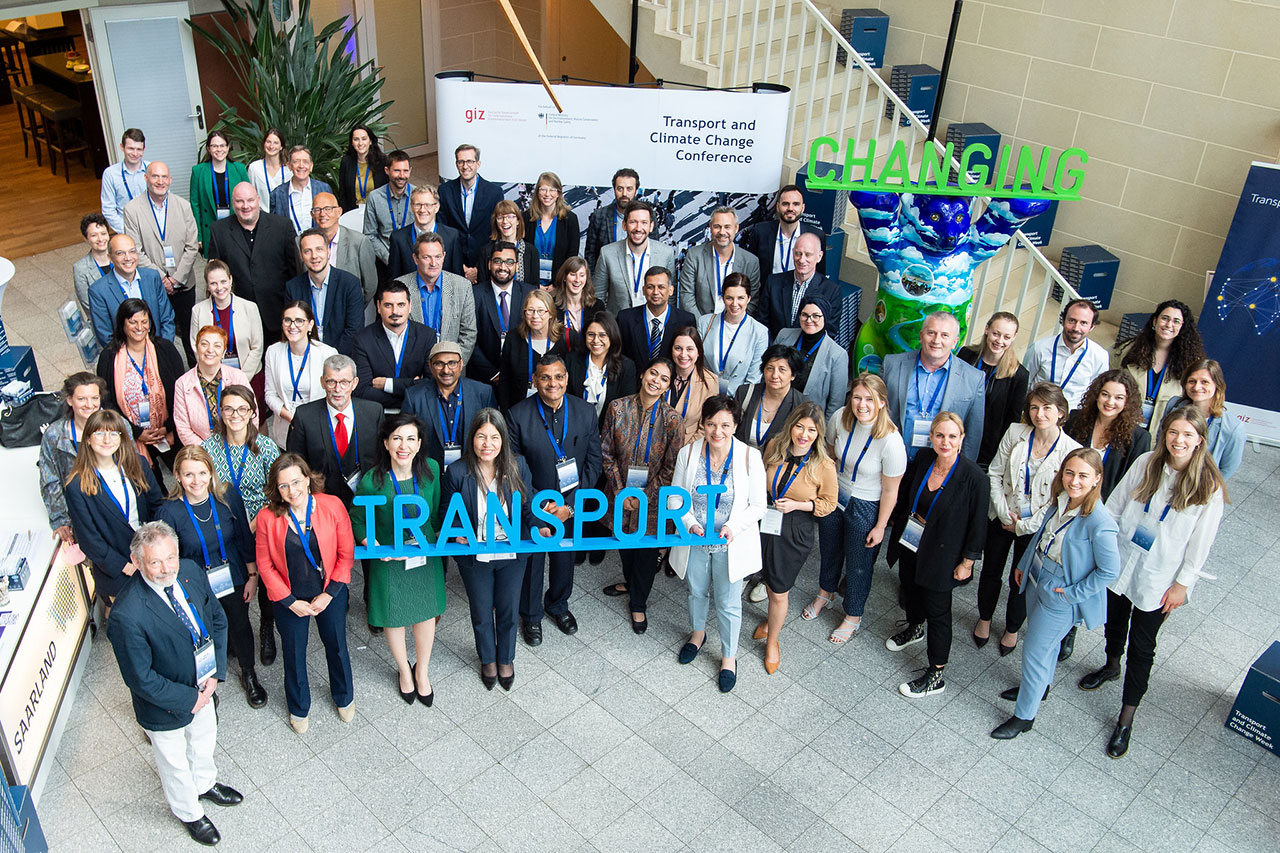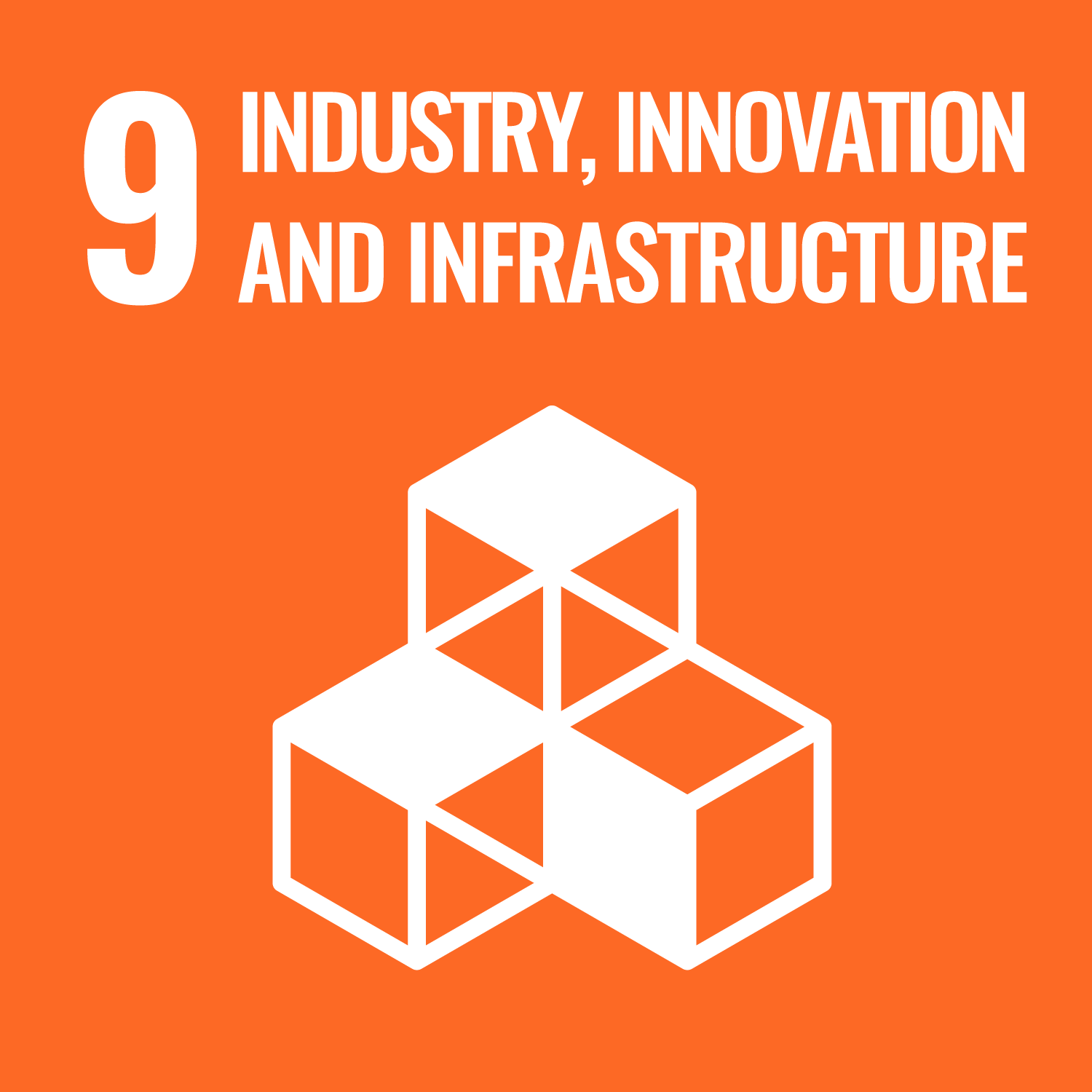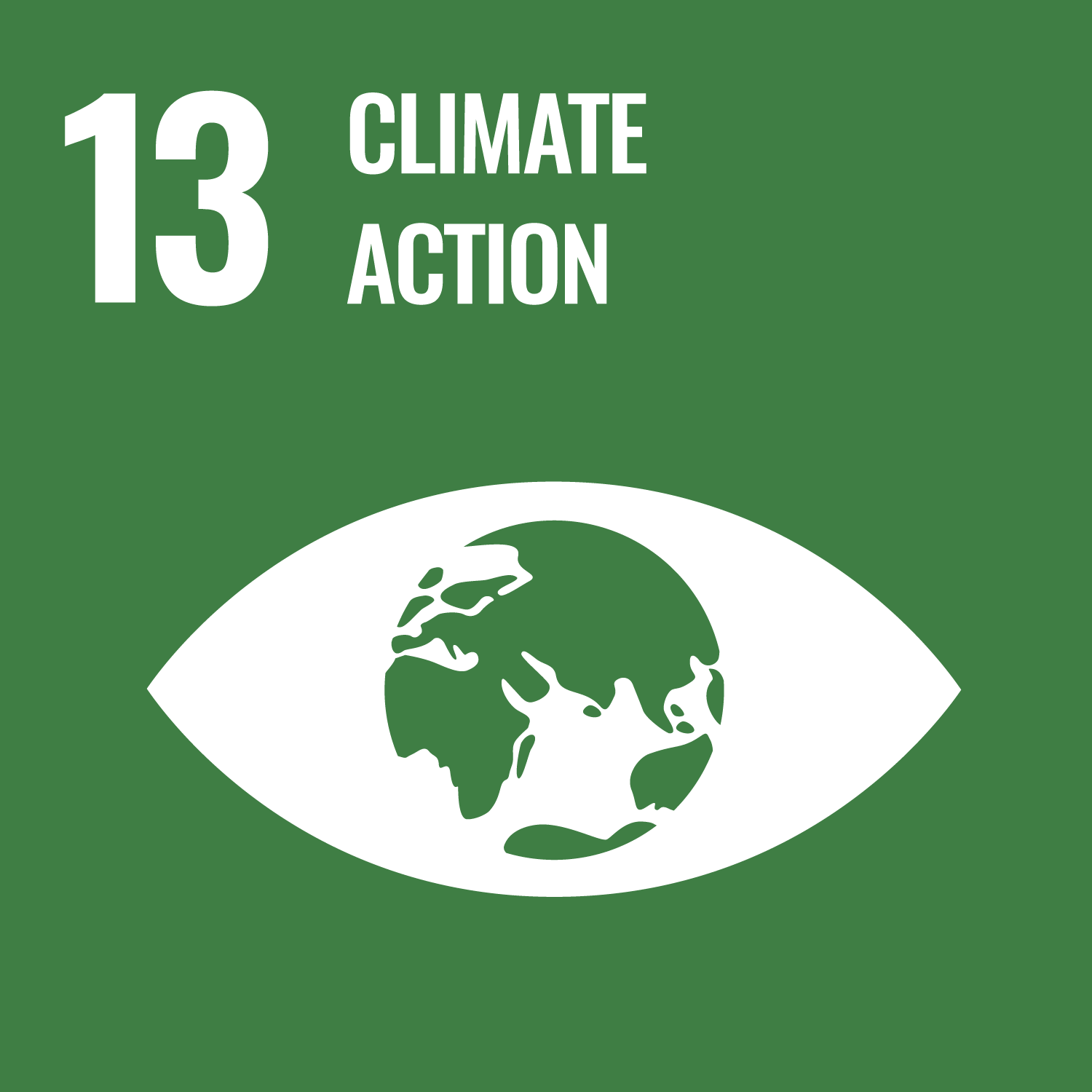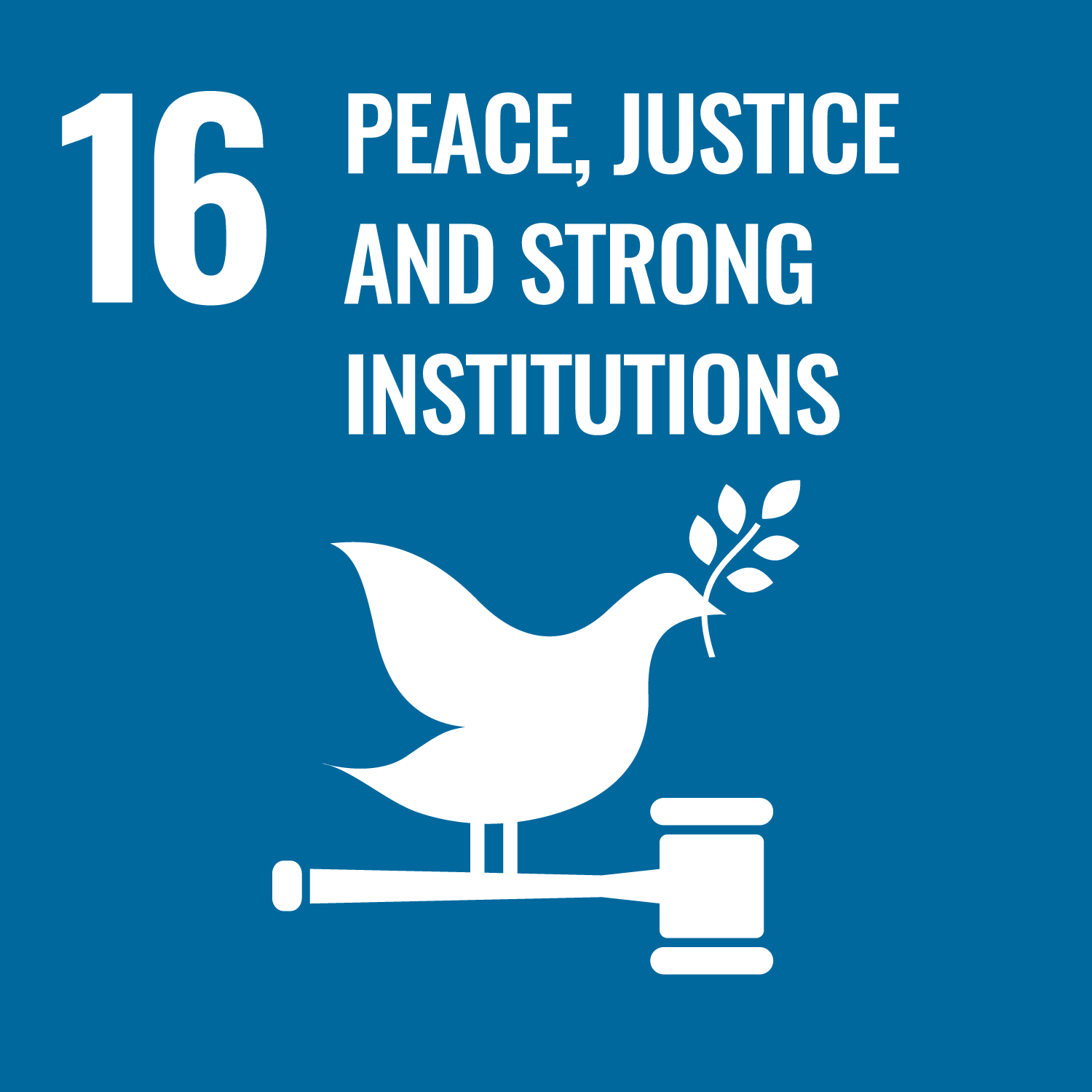Climate Friendly Freight Transport in India (Green Freight)
Objectives
Green Freight project aims to provide strategies and technical solutions to the decision-making agencies at the national, regional/local level to develop freight transport in India in a climate friendly and efficient manner and support the India’s Nationally Determined Contributions (NDCs).
Description
Freight sector in India is inefficient and the logistics cost is estimated at 14% of the GDP, far higher than observed in most of the developed countries, stands at 10% of the GDP. Transportation and inventory costs account for more than 90 percent of logistics costs. With rising income levels, rapidly growing e-commerce sector and a projected GDP growth of 7 to 8%, the demand for goods movement is expected to reach 15.6 trillion tonne-km by 2050. As per 2021 estimates, 71% of goods are carried by road, 18% by railways and rest by pipeline, waterways and airways (NITI Aayog and RMI India). Trucks are the largest energy consumer, using an estimated 1.3 EJ in 2020, with over 70% of all energy used to transport freight and is the fastest growing segment in freight transport energy use, doubling since 2010 (International Transport Forum (ITF), 2021).
India is therefore faced with the challenge of disproportionately large traffic volumes and high energy consumption, making freight transport as one of the sectors with highest potential for reducing greenhouse gas (GHG) emissions and other climate-relevant pollutants. The Green Freight project aims to support national and state-level partners in making the Indian freight and logistics sector climate-friendly and efficient, thereby contributing to the implementation of Indian NDCs.
The project advises the implementing partner Ministry of Commerce and Industry (MoCI), Govt. of India in setting up coordination and monitoring mechanisms for the National Logistics Policy, as well as relevant national authorities responsible for the freight sector in the development of climate-friendly standards and regulations. Measures for improved logistics management and the introduction of climate-friendly technologies will be implemented in selected regions. To ensure the sustainable implementation of national strategies and the measures tested, the competences of state level authorities, as well as private logistics companies will be strengthened. At the same time, the partners will be supported at national and state level in setting up monitoring systems for the reduction of greenhouse gas emissions.
Approach/Field of intervention
The project will undertake the following activities
- International best practices to develop National Logistics Masterplan
- Knowledge product on Multimodal Logistics Parks
- Guidelines for developing City Logistics Plans
- Knowledge product on Standards for Warehousing
- Assessment of Roll-On/Roll-Off rail-based services
- Knowledge products and training on Cold Chain Logistics
- Digital Tools for monitoring GHG emission for freight transport
- Green Freight & Logistics Capacity Building
The project will also undertake the following activities jointly with other projects in the Transport WG:
- Assessment of Innovative Technologies for Carbon Neutral Long-Haul Road Freight Transport
Targeted beneficiaries
The project aims to benefit the following beneficiaries:
- At the National level, Logistics Division, DPIIT, Ministry of Commerce and Industry (MoCI), Ministry of Railways (MoR), Ministry of Road Transport and Highways (MoRTH), Ministry of Housing and Urban Affairs (MoHUA) and NITI Aayog. The project supports them in integration of climate-friendly freight transport initiatives into future logistics policy and master plan preparation.
- At the State and urban levels, it sensitizes administrators in transport department; Urban local bodies; development authority, traffic police; and private sector stakeholders in planning and managing green freight initiatives
- Lastly, it will benefit the people who live and work in the selected regions. Their quality of life will be improved by reducing pollution from harmful chemicals, and other externalities as congestion and accidents in the freight transport sector. Consumers in India will benefit from reduced logistics costs and improved delivery time.
Highlight activities /Achievements
- National level “Consultative Meeting on Freight Smart Cities” was held on 2nd July 2021 under the chairmanship of Hon’ble Minister of Housing and Urban Affairs Shri Hardeep Singh Puri. The meeting discussed the importance of city logistics to improve efficiency of freight movement. A website of Freight Smart Cities also launched. Link: https://freightsmartcities.logistics.gov.in/about.html
- The Freight Green House Gas (GHG) Calculator launched by Logistics Division, Ministry of Commerce and Industry on 28th July 2021
- The methodology used in the Freight GHG calculator has been adopted by Ministry of Railways as Rail Green Points from 1st April 2022. Link: https://www.fois.indianrail.gov.in/RailSAHAY/Home.jsp
- Developed Commodity-Specific Post-Harvest Protocols for 10 fruits and vegetables; Developed Technical Design Specifications for Cold Chain Infrastructure. Link: https://www.cclrc.in/#
- Partner’s capacities developed in preparation of National Logistics Masterplans by introduction to best practices from European Union
Publications/Knowledge Products
Success Stories
Know your carbon savings: Rail Green Points initiative by Indian Railways
On 1st April 2022, Indian Railways launched “Rail Green Point” (RGP) initiative i.e. it will issue certificate to its freight customers on carbon savings that they have done by using railways as a medium of transport. This is an effort to motivate freight customers to transport more goods by rail, by making them aware of how many carbon emissions they have saved by opting to transport by rail than by road.
Hence, whenever a customer registers a demand online for railway wagons, they will receive a pop-up message thanking them for choosing to transport by Indian Railways and receive details of the expected saving of carbon emissions, called RGP. The RGPs are printed on electronic Railway Receipts (RRs), an RGP account of the registered freight customers is maintained, customers also get an email informing them about the RGP’s they have earned, and they can also download monthly or annual RGP certificates which may be used in their annual reports. Since the launch of the initiative, the Indian Railways have reported a cumulative saving of 11.05 million tonnes CO2*.
The methodology used for calculating RGP saving is derived from the “Freight GreenhouseGas Calculator” developed by Logistics Division, Department for Promotion of Industry and Internal Trade, Ministry of Commerce and Industry, Government of India under Indo-German development cooperation project ‘Climate Friendly Freight Transport in India (Green Freight).
*number calculated as on 24th August 2022.
Awareness Building and Push towards Railways as a Sustainable Mode
City Logistics Plan: An initiative by Centre and States to improve city freight efficiencies for ease of doing business and achieve net zero carbon emission targets by 2070
In the wake of national consultative meeting on Freight Smart Cities held on July 2nd, 2021, several states came ahead and expressed their interest to improve city freight efficiencies by preparation a City Logistics Plan*.
*The City Logistics Plan is envisaged as a strategic plan designed to adequately address the urban freight mobility needs of the city’s population and businesses and their surroundings so as to achieve an economic growth together with better quality of life and the environment. The exercise shall identify the main needs, plan and evaluate the possible solutions for urban freight and logistics in and around the city. To ensure city mobility needs are served as a whole, the plan after completion will be integrated with the city’s Comprehensive Mobility Plan (CMP) and other logistics plans at the state and national level: the State Logistics Plan and the Gati Shakti National Master Plan.
The central government, under Ministry of Finance’s (MoF) Special Assistance to States for Capital Investment 2022-23 of Government of India [F. No. 44(1)/PF-S/2022-23(CAPEX)] has extended support to each state, by providing a financial assistance for developing the City Logistics Plans. With this step, a number of cities have showed willingness to participate in the initiative and develop the strategic plan in a more efficient and inclusive manner.
Central Government’s Support to States for Preparing City Logistics Plan
COUNTRY
India
DURATION
January 2019 - April 2024
